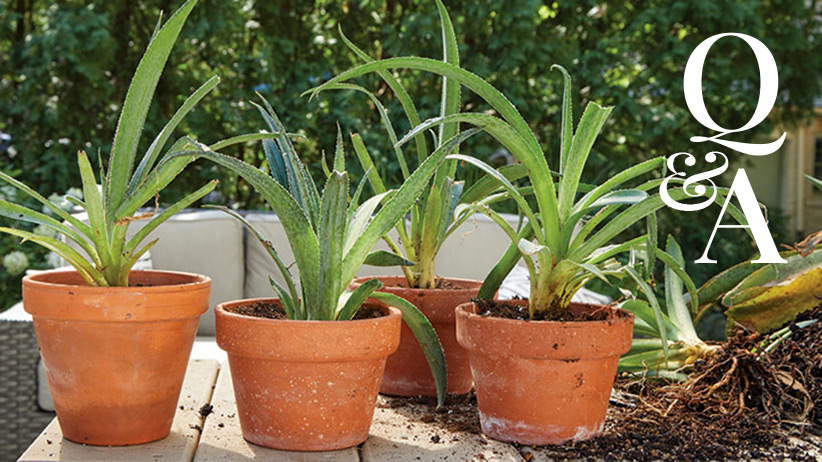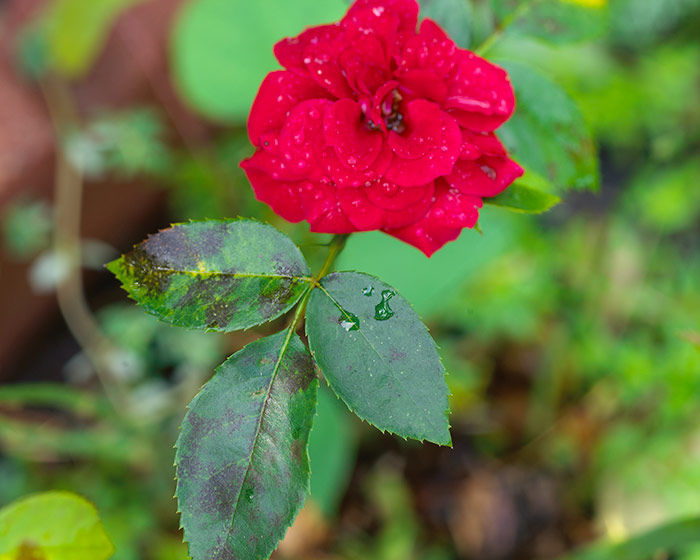
What are the sources of garden disease?
It’s easy to figure out how insects get from one plant to another. But fungal diseases? They don’t have wings or legs. And plants don’t sneeze or shake hands. So just how do these pests move through a garden so fast?
Your plants may accidentally drag a fungal disease home from the nursery, catch it on a wafting wind or pick it up from a visiting bug. Keep in mind that some years you may have a serious problem with one of these diseases and other years it stays dormant, just waiting for the right conditions to help it grow. Three things affect the growth of fungal disease. Scroll on to learn more!
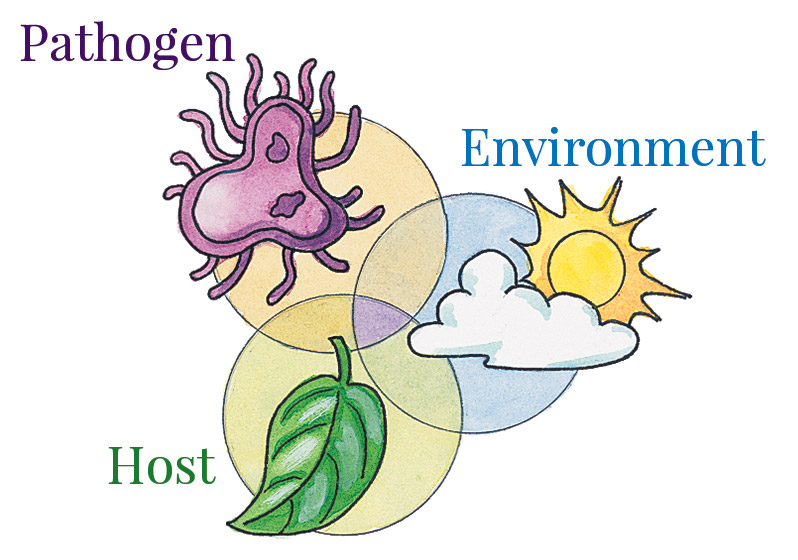
Pathogen
This is the organism that finds a susceptible plant and enters its system. It gets in through a pruning cut, an injury or simply through the leaves, stems or roots.
Host
The pathogen needs a susceptible plant to grow on. It may be a variety that’s prone to the disease or simply a plant that’s stressed.
Environment
Just the right weather conditions have to be present for the pathogen to grow and spread. It may need hot, cold, dry or humid weather — it depends on the disease.
Break the cycle
Disease can only grow when all three of these factors are present. The important thing to remember is that if you can break the cycle by removing just one of these elements, your plants will stay healthy. If you need some immediate solutions, there are some simple home-remedies for fighting fungal diseases. Look below for more specific information on 7 common garden diseases.
You Might Also Like:
What To Do About Boxwood Blight
Poison Ivy Lookalikes
10 Invasive Plants to Avoid in Your Garden
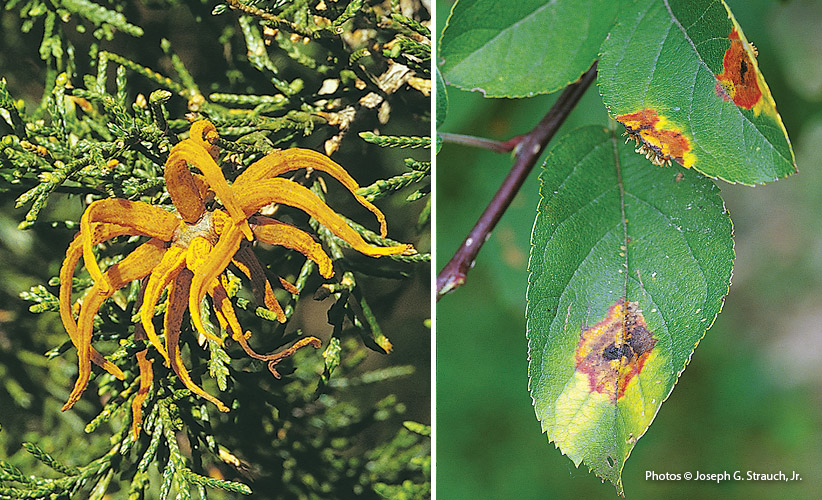
Cedar-apple rust
What to look for
In fall, you’ll spot hard brown galls on twigs of Eastern red cedar. In spring the galls swell, turn orange, as above left, and release spores. When those spores find the foliage of an apple tree in late spring, spots of orange rust, like the ones in the photo above right, grow on the leaves during the summer. Infected apple leaves drop off in midsummer, leaving the tree unsightly.
How cedar-apple rust spreads
Spores from galls are released in wet spring weather and travel by wind to infect new apple foliage. As they ripen, spores from the apple are then blown back to the cedar to continue the cycle next year.
Check these susceptible plants first
- Eastern red cedar
- Apples
- Crabapples
Long-range diagnosis
It’s messy and unsightly.
How to keep cedar-apple rust under control
Don’t plant Eastern red cedars and apple trees in the same garden; grow resistant apple cultivars. If you have susceptible apple trees, spray them with a fungicide as a preventative when the flower buds begin to open.
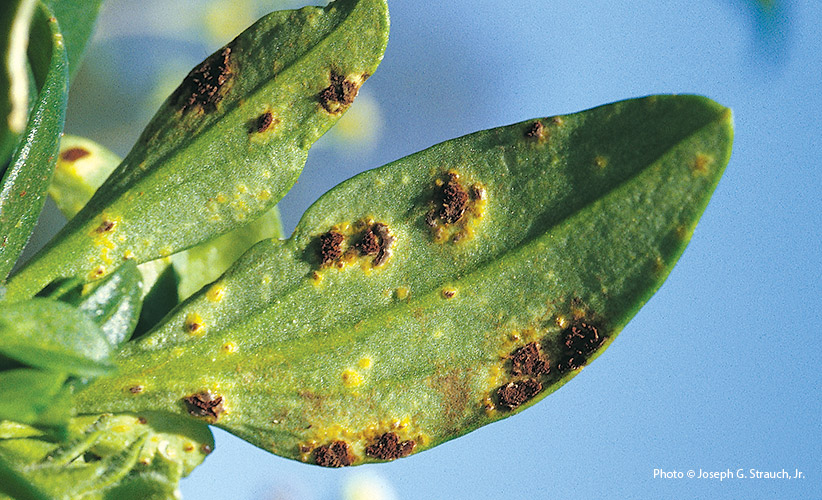
Rust
What to look for
You’ll spot powdery rusty-orange or brown spots, like those on the snapdragon above, on either side of the leaf. It’s most common in summer and fall, but can appear at any time.
How rust spreads
Spores are carried by wind and water to infect plants during humid conditions.
Check these susceptible plants first
Long-range diagnosis
Rust weakens the plant, reducing flower and fruit production.
How to keep rust under control
Remove and destroy infected leaves. Try to keep the foliage dry when you water and improve air circulation around the plant by removing dense vegetation nearby. Also, read descriptions to find resistant cultivars for your garden. If you still want to grow a susceptible plant, check with your local garden center for a fungicide you can spray in early summer as a preventative.
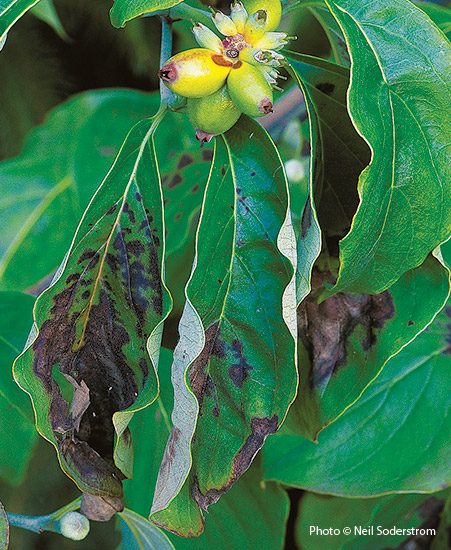
Anthracnose
What to look for
Usually after a cool, wet spring, you’ll find irregular dark blotches on leaves. Sometimes buds or small twigs will also be infected — symptoms vary with the host plant. Infected parts, especially leaves, eventually drop off.
How anthracnose spreads
Spores overwinter on twigs, move through the air and begin to grow in cool, wet weather.
Check these susceptible plants first
- Shade trees, such as sycamore, ash and maple
- Some small ornamental trees, like the dogwood in the photo above
Long-range diagnosis
Anthracnose rarely kills the tree, but repeated defoliation weakens the plant and makes it unsightly.
How to keep anthracnose under control
Plant trees in sites with good air circulation and prune dense crowns to improve air movement. Keep trees fertilized and vigorous so they can grow new foliage quickly. When choosing a new tree, read tags or ask for resistant cultivars.
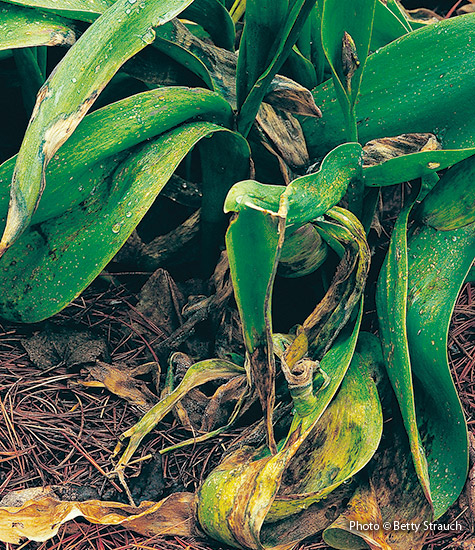
Botrytis gray mold
What to look for
Small, wet-looking spots, usually in spring, appear on tender new flower buds and blossoms. But it can spread to leaves and stems, as it has on these tulips. Even fruits can be damaged during periods of cool, wet weather. The spots grow larger and are often covered with gray fuzz.
How botrytis gray mold spreads
Wind and rain spread the spores, which grow best in cool, wet weather.
Check these susceptible plants first
- Almost any plant can be stricken with botrytis gray mold.
Long-range diagnosis
Flower buds don’t open, fruits are spoiled and the plant is weakened by this disease.
How to keep botrytis gray mold under control
Grow plants where air moves freely and don’t wet flowers or foliage when you water. Bury infected plant parts 18 to 24 inches deep — don’t put them in your compost pile. Several fungicides, including Maneb and Dicloran, are effective against this disease.
You Might Also Like:
DIY Fungus Fighting Recipes
Best Pruning Tools for Gardeners
How to Clean and Sharpen Old Pruners

Black spot
What to look for
Black spots on leaves and even occasionally on stems. The spots are small in spring but by summer they grow larger, then leaves turn yellow and eventually drop off.
How black spot spreads
Fungus spores overwinter on infected leaves and stems left lying on the ground. Splashing water transfers the fungus to young leaves from spring through fall.
Check these susceptible plants first
- Roses
Long-range diagnosis
As old leaves drop off, new leaves sprout. Repeating this process weakens the plant, making it more susceptible to other diseases, insects and winter injury. Plus it’s just plain unsightly.
How to keep black spot under control
- Search out resistant cultivars
- Grow roses where air is not blocked by surrounding plants
- Avoid wetting the leaves, especially late in the day
- Remove infected leaves as you spot them
- Fungicides from the garden center will help, but spray before you see symptoms
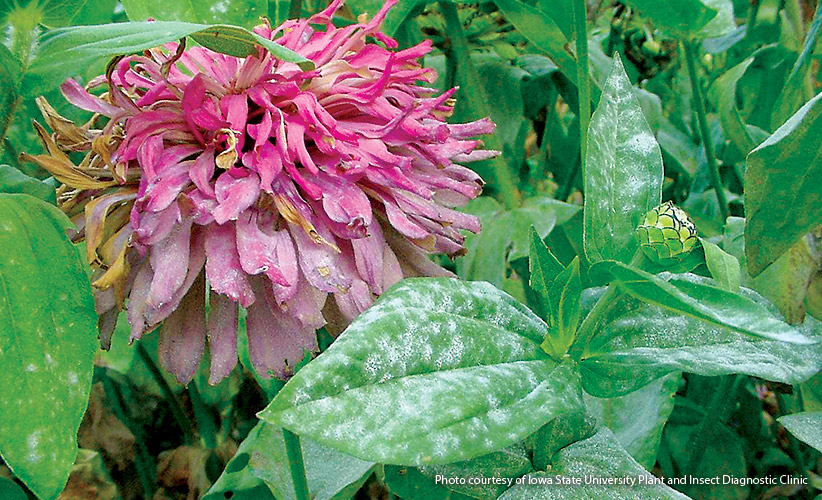
Powdery mildew
What to look for
The white granular patches look like dust on stems, the tops and bottoms of leaves and occasionally on flowers and fruit, and can be rubbed off with your fingers. You’ll find powdery mildew any time during the growing season wherever susceptible plants are grown.
How powdery mildew spreads
Spores of powdery mildew move by air.
Check these susceptible plants first
- Phlox
- Lilac
- Bee balm
- Aster
- Rose
- Lungwort
- Zinnia
- Crabapple
- And many others
Long-range diagnosis
Powdery mildew won’t kill a plant; it only affects the appearance.
Keep powdery mildew under control
Plant resistant varieties. Keep plants healthy and well watered to avoid stress. Always provide good air circulation around susceptible plants. Apply potassium bicarbonate fungicides and horticultural oils before you find mildew or spray them to keep the problem from spreading to more leaves or other plants.
You Might Also Like:
Gardening in Galvanized Raised Garden Beds
How to Avoid Basil Downy Mildew
Your Guide to Japanese Beetles
How to Build a Raised Garden Bed
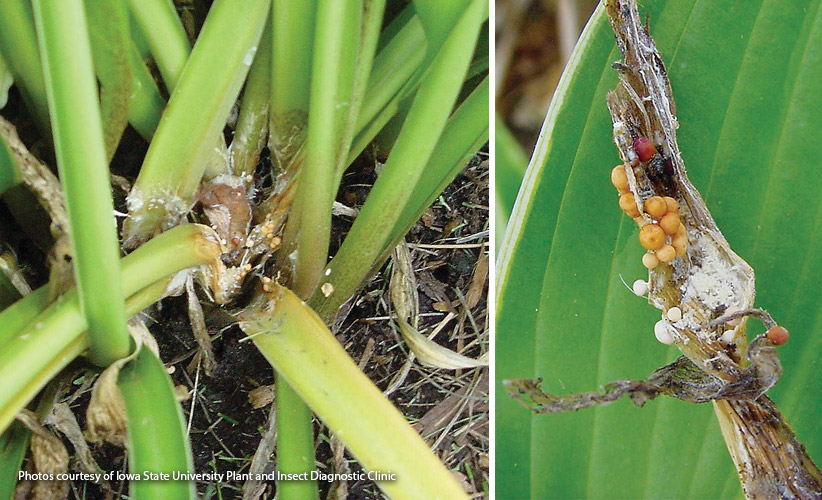
Crown rot
What to look for
Yellowing foliage and mushy stems appear just above the soil line. It can start any time during the growing season, but it’s most prevalent during hot, humid periods. Once called Southern blight, this fatal rot is now spreading into much of North America.
How crown rot spreads
Crown rot organisms live near the surface of the soil, waiting to enter a plant and destroy the tissue.
Check these susceptible plants first
Long-range diagnosis
It kills the plant if it’s not stopped, and can become a permanent problem in your garden.
Keep crown rot under control
Dig infected plants and remove the top 12 in. of soil. Bury everything in a hole several feet deep to keep the spores from spreading. Never add infected plants to your compost pile. One fungicide, Terrachlor®, may save infected plants if it’s applied before the entire crown has rotted.














